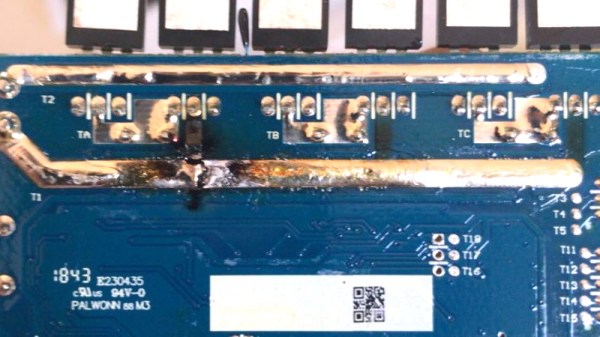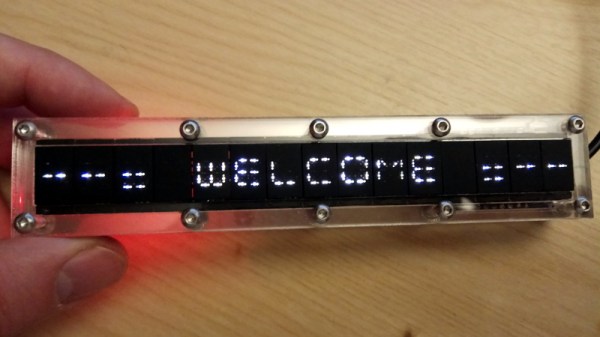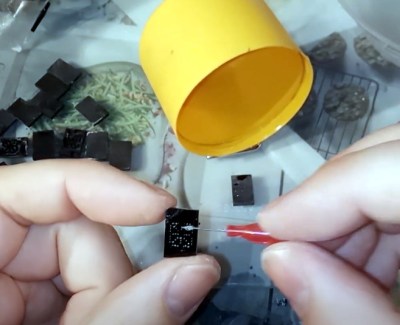How long has it been since a computer could boast about the fact that it contained 2,500 transistors? Probably close to half a century now, at a guess. So in a world with a couple of billion transistors per chip, is a 2,500-transistor computer really something to brag about? Yes. Yes, it is.
The CPU-less computer, called the TraNOR by its creator [Dennis Kuschel], is an elaboration on his previous MyNOR, another CPU-less machine that used a single NOR-gate made of discrete transistors as the core of its arithmetic-logic unit (ALU). Despite its architectural simplicity, MyNOR was capable of some pretty respectable performance, and even managed to play a decent game of Tetris. TraNOR, on the other hand, is much more complicated, mainly due to the fact that instead of relying on 74HC-series chips, [Dennis] built every single gate on the machine from discrete MOSFETs. The only chips on the four stacked PCBs are a trio of memory chips; we don’t fault him at all for the decision not to build the memory — he may be dedicated, but even art has its limits. And TraNOR is indeed a work of art — the video below shows the beautiful board layouts, with seemingly endless arrays of SMD transistors all neatly arranged and carefully soldered. And extra points for using Wintergatan’s marble machine melody as the soundtrack, too.
As much as we loved the original, TraNOR is really something special. Not only is it beautiful, but it’s functional — it’s even backward-compatible with MyNOR’s custom software. Hats off to [Dennis] for pulling off another wonderful build, and for sharing it with us.
Continue reading “Thousands Of Discrete MOSFETs Make Up This Compact CPU-Less Computer”



















